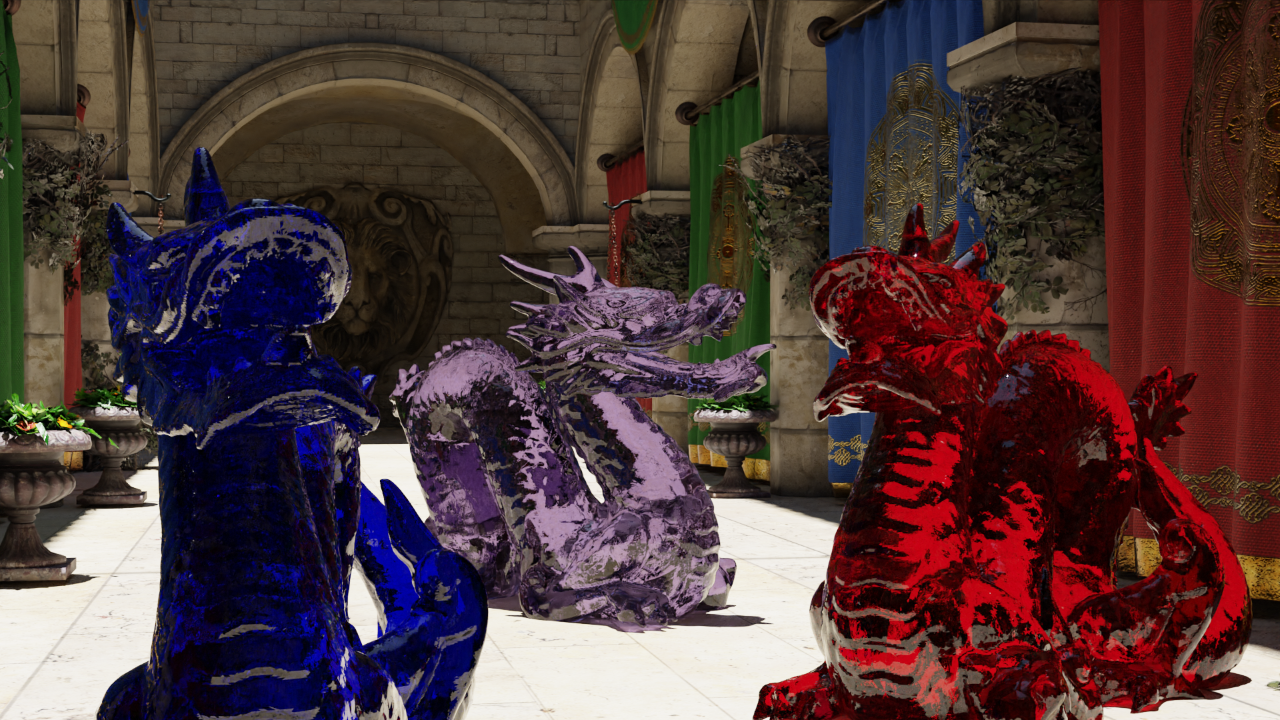
Emulated Foveated Path-Tracing
Andrew Polychronakis
Type: Funded Project · Supervisor: Katerina Mania
Collaborators: George Alex Koulieris
Research Domains: Eye-Tracking, Foveated Rendering, Real-Time Graphics, Path-Tracing
Abstract
Rendering techniques such as path tracing allow for the rendering of complex effects such as reflection, refraction, soft shadows and diffuse inter-reflection. At full resolution, path tracing cannot be deployed in real-time based on current graphics hardware due to slow convergence times and noisy outputs, despite recent advances in denoisers. In this work, we develop a perceptual sandbox emulating a foveated path tracer to determine the eccentricity angle thresholds that enable imperceptible, interactive foveated path tracing in real-time. In a foveated path tracer the number of rays fired can be decreased, and thus performance can be increased, by reducing the following: the total number of samples-per-pixel, the total number of secondary ray bounces and the total pixel count of the output buffer. For our study, due to current hardware limitations prohibiting real time path-tracing, we pre-render image buffers and emulate foveated rendering as a post-process by selectively blending the pre-rendered content, driven by an eye tracker. We then perform three experiments to estimate conservative thresholds of eccentricity boundaries for which image manipulations are imperceptible. The first experiment compared pairs of sequences rendered with different foveation eccentricities. The second experiment investigated the lowest foveal eccentricity perceived to be indistinguishable compared to the non-foveated reference. Finally, the last experiment measured a single eccentricity per user deemed to be imperceptible, based on a slider test. Contrary to our expectation of a single threshold across the three experiments, our results indicated three different average thresholds, one for each experiment. We hypothesise that this is due to the dissimilarity of the methodologies, i.e., A-B testing vs sequential presentation vs custom adjustment of eccentricities affecting the perceptibility of peripheral blur among others. We estimate, for the first time for path tracing, specific thresholds of eccentricity that limit any perceptual repercussions whilst maintaining high performance. We perform an analysis to determine potential computational complexity reductions due to foveation in path tracing. Our analysis show a significant boost in path-tracing performance (> 2x-3x) using our foveated rendering method as a result of the reduction in the primary rays.
